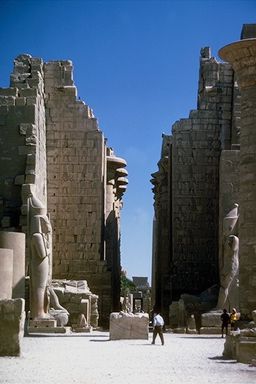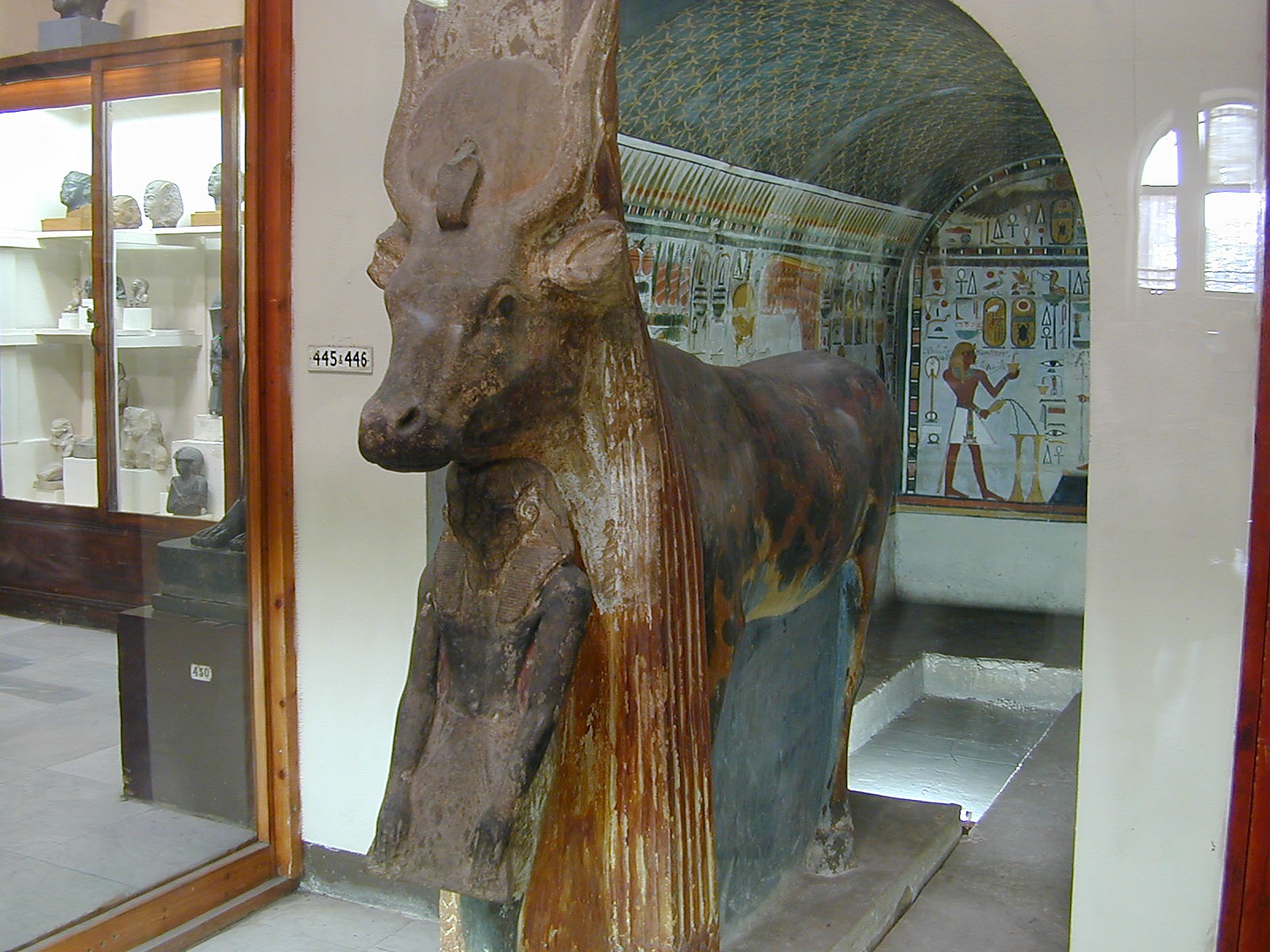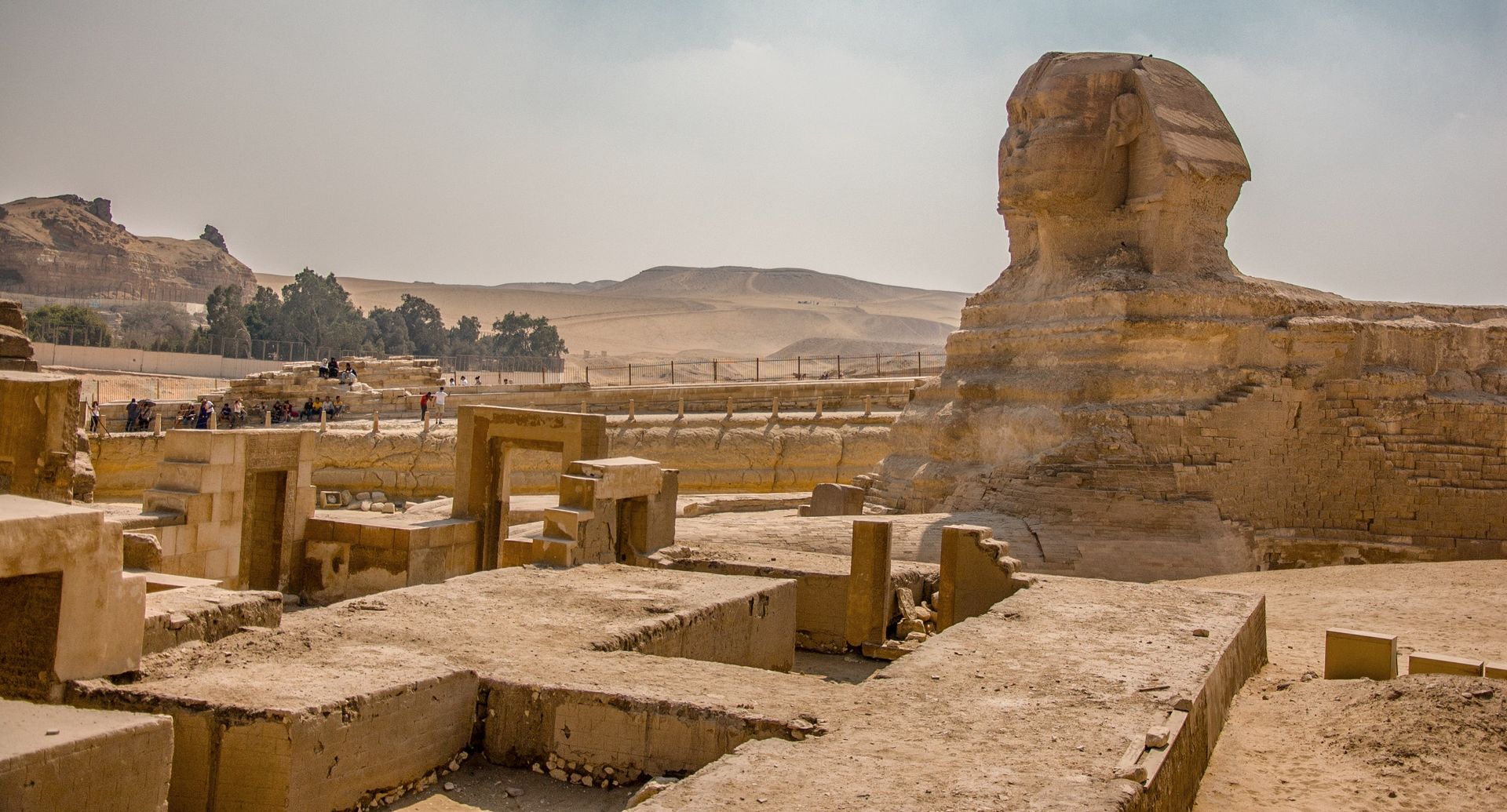Ancient Egypt in the Bible
Egypt is the land of the Nile River and the pyramids. It holds a place of great significance in Scripture.
Biblical people who lived in Egypt
- Jesus Christ—spent part of his early days in Egypt, until Herod the Great’s death
- Mary, the mother of Jesus—escaped to Egypt
- Joseph, the adoptive father of Jesus
- Abraham—went to Egypt
- Hagar—an Egyptian and mother of Ishmael who married an Egyptian
- Joseph, son of Jacob
- Jacob (later called Israel)—migrated to Egypt, where he died and was embalmed
The patriarchs of the tribes of Israel—Asher, Benjamin, Dan, Ephraim, Gad, Issachar, Judah, Levi, Manasseh, Naphtali, Reuben, Simeon—held hostage in Egypt, Zebulun
- The entire nation of Israel—until the Exodus, due to famine and later disobedience and enslavement
- Moses, prophet and leader of the Israelites
- Aaron, prophet and high priest
- Miriam
- Joshua—born in Egypt
- Jambres—opposed Moses in Egypt
- Jeremiah, the prophet—taken to Egypt and died there
- Jehoahaz, king of Judah—carried away prisoner into Egypt
- King Jeroboam I—fled to Egypt
- Johanan—fled to Egypt
- Urijah, the prophet—fled to Egypt
- Prince Hadad—fled to Egypt
- Many Jews migrated to Egypt—see: dispersion
- John Mark—took the Gospel to Egypt
- and others
Egyptian archaeology confirms the Bible
A number of remarkable clay tablets were discovered at Tell-el-Amarna in Upper Egypt. They confirm the historical statements of the Book of Joshua, and prove the antiquity of civilization in Syria and Israel. As the clay in different parts of Israel differs, it has been found possible by the clay alone to decide where the tablets come from when the name of the writer is lost. The inscriptions are cuneiform, and in the Aramaic language, resembling Assyrian. The writers are Phoenicians, Amorites, and Philistines, but in no instance Hittites, though Hittites are mentioned.
The tablets consist of official dispatches and letters, dating from 1480 BC, addressed to the two Pharaohs, Amenophis III and IV, the last of this dynasty, from the kings and governors of Phoenicia and Canaan. There occur the names of three kings killed by Joshua, Adoni-zedec, king of Jerusalem, Japhia, king of Lachish (Joshua 10:3), and Jabin, king of Hazor (11:1); also the Hebrews (Abiri) are said to have come from the desert.
- Is the Biblical story of JOSEPH IN EGYPT verified? Answer
- ISRAELITES IN EGYPT—Is there archaeological evidence that the Israelites once lived in Egypt? Has Joseph’s original tomb been found? Answer
 Learn about archeology and the Bible
Learn about archeology and the Bible
Prophecies about Egypt
The principal prophecies of Scripture regarding Egypt:
It might be easily shown that they have all been remarkably fulfilled. For example, the singular disappearance of Noph (i.e., Memphis) is a fulfillment of Jeremiah 46:19, Ezek. 30:13.
History
Egypt consists geographically of two halves, the northern being the Delta, and the southern Upper Egypt, between Cairo and the First Cataract. In the Old Testament, Northern or Lower Egypt is called Mazor [matsowr—something hemming in], “the fortified land” (Isaiah 19:6; 37:25, which the King James Version translates as “defense” and “besieged places” and other versions translate as Egypt); while Southern or Upper Egypt is Pathros, the Egyptian Pa-to-Res, or “the land of the south” (Isaiah 11:11).
But the whole country is generally mentioned under the dual name of Mizraim, “the two Mazors.”
The civilization of Egypt goes back to a very remote antiquity. The two kingdoms of the north and south were united by Menes, the founder of the first historical dynasty of kings. The first six dynasties constitute what is known as the Old Empire, which had its capital at Memphis, south of Cairo, called in the Old Testament Moph (translated as “Memphis” in Hos. 9:6) and Noph. The native name was Mennofer, “the good place.”
The Middle Empire was overthrown by the invasion of the Hyksos, or shepherd princes from Asia, who ruled over Egypt, more especially in the north, for several centuries, and of whom there were three dynasties of kings. They had their capital at Zoan or Tanis (now San), in the northeastern part of the Nile River delta.
It was in the time of the Hyksos that Abraham, Jacob, and Joseph entered Egypt. The Hyksos were finally expelled about 1600 BC, by the hereditary princes of Thebes, who founded the Eighteenth Dynasty, and carried the war into Asia. Canaan and Syria were subdued, as well as Cyprus, and the boundaries of the Egyptian Empire were fixed at the Euphrates.
The Sudan (aka Soudon), which had been conquered by the kings of the Twelfth Dynasty, was again annexed to Egypt, and the eldest son of the Pharaoh took the title of “Prince of Cush.”
Even in the time of Abraham, Egypt was a flourishing and settled monarchy. Its oldest capital, within the historic period, was Memphis, the ruins of which may still be seen near the Pyramids and the Sphinx.
When the Old Empire of Menes came to an end, the seat of empire was shifted to Thebes, some 300 miles farther up the Nile. A short time after that, the Delta was conquered by the Hyksos (aka Shepherd Kings), who established their capital at Zoan, the Greek Tanis, now San, on the Tanic arm of the Nile. All this occurred before the time of the new king “which knew not Joseph” (Exodus 1:8).
In later times, Egypt was conquered by the Persians (525 BC), and by the Greeks under Alexander the Great (332 BC), after whom the Ptolemies ruled the country for 3 centuries. Subsequently it was for a time a province of the Roman Empire; and at last, in 1517 AD, it fell into the hands of the Turks.
Abraham and Sarah went to Egypt in the time of the Shepherd Kings.
The exile of Joseph and the migration of Jacob to “the land of Goshen” occurred about 200 years later.
On the death of King Solomon, Shishak, king of Egypt, invaded Israel (1 Kings 14:25). He left a list of the cities he conquered.
After Rameses III, Egypt fell into decay. Solomon married the daughter of one of the last kings of the 21st Dynasty, which was overthrown by Shishak I, the general of the Libyan mercenaries, who founded the 22nd Dynasty (1 Kings 11:40; 14:25-26). A list of the places he captured in Israel is engraved on the outside of the south wall of the temple of Karnak.
In the time of King Hezekiah, Egypt was conquered by Ethiopians from the Sudan (Soudan), who constituted the 25th Dynasty. The third of them was Tirhakah (2 Kings 19:9).
In 674 BC, it was conquered by the Assyrians, who divided it into 20 satrapies, and Tirhakah was driven back to his ancestral dominions.
14 years later it successfully revolted under Psammetichus I of Sais, the founder of the 26th Dynasty. Among his successors were Necho (2 Kings 23:29) and Hophra, or Apries (Jeremiah 37:5, 7, 11). The dynasty came to an end in 525 BC, when the country was subjugated by Cambyses.
Soon afterwards it was organized into a Persian satrapy (a territory governed by a satrap/governor).
Pharaohs
The title of Pharaoh, given to the Egyptian kings, is the Egyptian Per-aa, or “Great House.” It is found in very early Egyptian texts.
Examples
- Necho II
- Shishak I, aka Sheshonk I, Sheshonq-I
- What evidence has been found of the Egyptian Pharaoh Shishak?
- Tirhakah
- Zerah, probably Osorkon II—invaded the Kingdom of Judah
- …for more, see: Pharaohs of the Bible
Cities of ancient Egypt
Cities include…
- Alexandria (aka Raqote)
- Beth-shemesh—an idol sanctuary in Egypt (aka On, Ôn, Iunu On, Āwen, Ὂν, Heliopolis)
- No (aka No-A'mon and Thebes)
- Noph
- Memphis (aka Men-nefer)
- Migdol
- Pelusium
- Per-Atum (aka Pithom), Tjeku, Heroöpolis, Heroonopolis)
- Sin, a city in Egypt (aka Sena, Seyân, Per-Amun, Paramoun, Peremoun, Peromi, Pelusium, Pelousion)
- Syene (aka Swenett, Aswan)
- Zoan
- Pi-Ramesses (Per-Rameses, Per Ramessu, Qantir)
- Ta-senet (aka Luxor, Latopolis, Niwt-rst, Niwt-Imn, Nōʼ ʼĀmôn, No-Amon, Iunu-shema, Diospolis Magna, Ta-pe, Hundred-gated Thebes)
- Thebes
- Abu (Yebu, Elephantine)
- Akhetaten (Tell el-Amarna)
- Avaris (Tel el-Dab'a, Tell el-Dab'a), a major capital for trade and the capital of an administrative division of the land (aka Athyria)
- Behdet (Apollonopolis Magna, Apollinopolis Magna, Djeba, Edfu, Utes-Hor)
- Buto (Butus, Butosus, Per-Wadjet, Pe and Dep)
- Damanhur (Timinhor, Hermopolis Mikra, Tel Ballamon)
- Djedu (Busiris, Per Usiri)
- Djedet (Per-Banebdjedet, Mendes, Anpet, Tell El-Ruba)
- Djerty (Ḏrty, Touphion, Tuphium, Thouôt, Tuot, El-Tod)
- Henen-nesut (Nenj-neswt, Ehnasya, Hnas, Ahnas, Herakleopolis Magna)
- Hut-hery-ib (Athribis, Attrib, Tell Atrib, Medeenet Ashaysh)
- Iuny (Erment, Iunu-Montu, Hermonthis, Armant)
- Khasut (Xois, Xeos, Skhoo)
- Kosseir (Al Qusair, El Quseir, Qusseir, Qosseir, Leucus Limen)
- Letopolis (Khem)
- Luxor
- Madu (Medamud)
- Menouthis (near Heracleion and Canopus)
- Nekheb (Eileithyiaspolis, Lucinae Civitas, El Kab)
- Nekhen (Al-Kom Al-Aħmar, Hierakonpolis, El Kab)
- Nubt (Ambo, Omboi, Ombos, Ombi, Kom Ombo)
- Per-Hathor (Pathyris, Inerty, Naga el-Gherira, Aphroditopolis, Gebelein)
- Per-Bast (Bubastis, Per-Bastet, Tell-Basta)
- Per-Sopdu (Soped, Saft el-Hinna)
- Piemro (Naucratis, Ναύκρατις)
- Pikuat (Canopus, Canobus, Kanobos, Kanopos, Schedia)
- Ptkheka
- Rosetta (Khito, Bolbitine, Bolbitinum, Bolbitinon, Rakhit, Rexi, Trashit)
- Sais (Zau)
- Semabehdet (Diospolis Inferior, Tel El Balamun)
- Šetennu (Sheten, Shednu, Pharbaetus, Pharbaethus)
- Tanis (aka Zoan)
- Tamiat (Damietta, Damiata, Domyat, Tamiathis, Ταμίαθις)
- Taremu (Leontopolis, Leonto, Leontos, Tell el-Muqdam)
- Thinis
- Thonis (Heracleion, Ἡράκλειον)
- Tjaru (Sile, Tharu, Zaru, Djaru, Tjel, Edfu—Lower Egypt)
- Tjebnutjer (Sebennytos)
- Weprehwy (Hermopolis Parva, Tell al-Naqus)
- and others
Idolatrous religions / False gods of Egypt

Ancient Egypt was a place of great idolatry. The Egyptian religion was a strange mixture of pantheism and animal worship, the gods being adored in the form of animals.
Under the Old Empire, Ptah, the creator god, the god of Memphis, was at the head of the pantheon; afterwards Amon, the god of Thebes, took his place. Amon, like most of the other gods, was identified with Ra, the sun-god of Heliopolis (Iunu, Ôn, Āwen, Ὂν).
The Egyptians believed in a resurrection and future life, as well as in a state of rewards and punishments dependent on our conduct in this world. The judge of the dead was Osiris, who had been slain by Set, the representative of evil, and afterwards restored to life. His death was avenged by his son Horus, whom the Egyptians invoked as their “Redeemer.” Osiris and Horus, along with Isis, formed a trinity, who were regarded as representing the sun-god under different forms.
There were over 2-thousand false gods named in ancient Egypt, including:
- Aker (lion)
- Ammit, aka Ammut (crodile head with leopard and hippopotamus body)
- Amun, aka Amen (air and wind)
- Amunet (a creation goddess, wife of Amun)
- Anhur (god of sky and war)
- Anput
- Anubis (jackal-headed god of the dead; son of Osiris)
- Anuket (goddess of Nile River rapids and flood)
- Apep (snake)
- Apis (bull)
- Apophis (chaos snake)
- Aten (Sun disk)
- Babi (baboon)
- Banebdjedet (ram)
- Bat (cow goddess, fertility)
- Bastet (cat goddess)—aka Bast
- Bes (dwarf)
- Djehuti, Djehuty (ibis, wisdom)
- Geb (god of the Earth)
- Gengen-Wer (goose)
- Hapi (god of the Nile River and water)
- Hathor (cow-headed goddess of love)
- Heh (infinity)
- Heket (frog-headed goddess—aka Heqet, Heqat)
- Horus (falcon sky god; son of Osiris and Isis)
- Iah (Moon god)
- Isis (cows, snakes, scorpion, lotus / goddess of medicine and healing, magic, marriage, and protection)
- Kebechet—a.k.a. Khebhut, Kebehut, Qébéhout, Kabehchet, Kebehwet
- Khepri (fly-headed god of creation, scarab beetles, controlling Sun’s movement)
- Khnum (ram)
- Khonsu (god of the Moon)
- Kuk, Kek (darkness)
- Maahes (lion)—a.k.a. Mahes, Maihes, Mihos, Miysis, Mios
- Ma'at (ostrich goddess of order, truth, justice)
- Mafdet (justice)
- Menhit (lion)
- Mehet-Weret (cow, fertility)
- Methen (giant snake)
- Montu (falcon, war)
- Mut (vulture)
- Nehebkau (snake)
- Nephthys (funerary goddess)
- Nekhbet (vulture goddess)
- Nun (water)
- Nut (cow goddess of sky and stars)
- Osiris (bull god of underworld and afterlife)
- Pakhet (goddess of motherhood)
- Ptah (bull god of creation)
- Qebui (north wind)
- Qetesh (goddess of fertility)
- Ra (god of the Sun—a.k.a. Amun-Ra and Akmun-Rah)
- Raet-Tawy (sun)
- Sed (jackal)
- Sekhmet (lion, fire, vengeance goddess)
- Seker (falcon)
- Selket (scorpion)
- Serqet (scorpion)
- Seshat (writing and measurement)
- Set (storms, chaos, deserts)—a.k.a. Seth, Setesh, Sutekh, Setekh, Suty
- Shu (lion, wind and air)
- Sobek (crocodile)
- Socar, Sokar (cemetery god)
- Sopdu (war)
- Tabitjet (scorpion)
- Tawaret, Taweret (hippopotamus, fertility, birth)
- Tefnut (lion, water, fertility)
- Tehuty (ibis, wisdom)
- Thoth (ibis, wisdom)
- Untabi
- Ur-Ares (boat)
- Ur-Heb
- Ur-Hekau
- Urit-Hekau (spells, enchantments)
- Ur-Henu (water)
- Ur-HenNenu (water)
- Ur-Heka
- Ur-Khert (jackal)
- Utchait
- Utet-Tefef
- Wadjet (cobra, justice, royalty, protection)
- Wadj-Wer (the Sea)
- Wepwawet (jackal)
Impotence of Egypt’s gods
The 10 plagues sent on Egypt by the one true God openly mocked these pagan gods, depicted on idols everywhere. Jehovah displayed his omnipotence, showing their gods to be powerless and utterly false, affording their idolatrous worshipers absolutely no protection. Examples:
- Plague of frogs (Heket, frog-headed goddess—a.k.a. Heqet, Heqat)
- Plague of flies (Khepri, fly-headed scarab god)
- Nile River and all water replaced with blood (Hapi and Anuket, god and goddess of Nile and water; also Ur-Henu—god of water, Tefnut—goddess of water, Osiris—rules over water and judgment, Khnum—god of Nile, Sobek—crocodile god of Nile)
-
Plague on all cows/cattle (Hathor, cow-headed goddess, sometimes cow bodied)
 Goddess Hathor (cow) with King Amenhotep II beneath (18th Dynasy). Photo © copyright, BiblePlaces (a ChristianAnswers Contributing Specialist)
Goddess Hathor (cow) with King Amenhotep II beneath (18th Dynasy). Photo © copyright, BiblePlaces (a ChristianAnswers Contributing Specialist) - Intense, killing hail, flashing fire and thunder (Set—god of storms)
- Sun and Moon disappear leaving total darkness (Ra, god of the Sun—a.k.a. Amun-Ra and Akmun-Rah; Khonsu, Thoth, Iah [Yah, Lah], gods of the Moon)
- Death of all firstborn in Egypt, save the Israelites who obeyed God (Anubis, god of death)
More information
- About idolatry and false gods in the Bible
- About idols in the Bible
- About the fall of mankind to worldwide depravity
- What is SIN AND WICKEDNESS? Answer
ALSO SEE
- Mizraim—another name for Egypt
- Abel-mizraim—place where Egyptians mourned for Jacob
- abomination of the Egyptians
- Adullam—fortified against Egypt
- alabaster
- arch
- Ashkelon—conquered by Egypt
- Balm of Gilead—imported by Egypt
- barley
- blains
- birthdays—celebrated in Egypt
- book
- Book of Exodus
- bondage
- bulrush
- bricks
- camphire—native to Egypt
- Casluhim
- chariot
- Chub—allies of Egypt
- city
- Chushan-rishathaim
- cup—shown on Egyptian monumnents
- cup-bearer
- Cush
- darkness—plague on Egypt
- desert
- dine
- divination—practiced in Egypt
- embalming
- Esarhaddon—conquered Egypt
- Ethiopia—country near Egypt
- The Exodus
- famine
- farm
- first-born—killed in Egypt
- fitches—cultivated in Egypt
- flax
- fly
- frog
- Gezer—conquered by Egypt and gifted to Solomon
- Gaza—center of commercial traffic with Egypt
- gier eagle—common in Egypt, called “Pharaoh’s chicken”
- governor
- guard
- hair
- hail—plague of Egypt
- Hanes—place in Egypt
- Hazor—military objective of Egypt
- herdsman
- Hezekiah—allied with Egypt
- Jericho—communicated with Egypt
- league
- leek
- Libya—near Egypt
- lice
- linen
- locust
- Lubims—lived near Egypt
- Ludim—mercenaries for Egypt
- melons
- magic
- miracle
- Moses
- Nile
- nitre (natron)—a product of Lake Natron in Egypt
- onion
- paper
- Passover—first one took place in Egypt
- Pathros
- Persia—conquered Egypt
- pharaoh
- Pharaoh's daughters
- Phut (Put)—mercenaries for Egypt
- Pi-hahiroth—place in Egypt
- plague
- pomegranate—common in Egypt
- prisons and dungeons—first mentioned in Egypt
- Ramases—places in Egypt
- Rehoboam—conquered by Egypt
- River of Egypt
- Seba—land near Egypt
- Sihor—another name for the Nile
- Shur—place on Egyptian border
- Sinaiticus codex—probably written in Egypt
- So—conquered Egypt
- Solomon—had an alliance with Egypt, bought Egyptian horses and linen yarn
- Stream of Egypt
- sun
- thunder—a warning to Egypt
- Tyre—often attacked by Egypt
- Wise men

